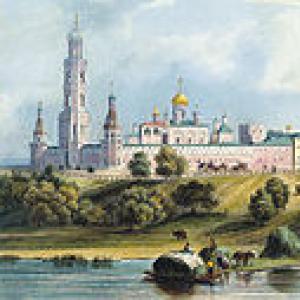Presentation on biology "Indoor fern". Ferns diversity and significance
Slide_image" src="https://fs1.ppt4web.ru/images/5552/82725/640/img1.jpg" alt="ADIANTUM (Adiantum) ADiantum (Adiantum) is a genus of ferns belonging to the monotypic family Adianthaceae. One of the most widely known ferns, found both in natural habitats and at home." title="Adiantum (Adiantum) Adiantum (Adiantum) is a genus of ferns belonging to the monotypic family Adiantum (Adiantaceae). One of the most widely known ferns, found both in natural habitats and at home.">!}










1 of 12
Presentation on the topic: Variety of ferns
Slide no. 1 https://fs1.ppt4web.ru/images/5552/82725/310/img1.jpg" alt="ADIANTUM (Adiantum) ADiantum (Adiantum) is a genus of ferns belonging to mono" title="ADIANTUM (Adiantum) ADIANTUM (Adiantum) is a genus of ferns belonging to mono">!}
Slide description:
Adiantum (Adiantum) Adiantum (Adiantum) is a genus of ferns belonging to the monotypic family Adiantum (Adiantaceae). One of the most widely known ferns, found both in natural habitats and at home. The name of the genus comes from the Greek "adiant" ("a" - "not", "diant" - "to moisten"), as water easily rolls off the plant, leaving it dry. Adiantums are prized for their elegant evergreen or deciduous fronds that are a delicate purplish-pink color when unfurled. The fronds are formed from leaves of a characteristic oblong or diamond shape. Sporangia are formed along the veins on the underside along the edge of the segments - leaflets; the features of their location are often used to identify species.
Slide no. 3

Slide description:
ASPLENIUM (Asplenium) Asplenium, or nesting ossicle (Asplenium) is a genus of ferns of the Aspleniaceae family. Herbaceous epiphytic, terrestrial, rocky low plants with pinnate or forked leaves; short vertical or creeping rhizomes; in the tropics - often large, with pinnate or entire leaves up to 2 m long and thick rhizomes with a mass of tangled roots. In the world flora, there are about 700 species of widespread and diverse aspleniums or costens, growing on all continents, with the exception of Antarctica. The homeland of aspleniums is the humid forests of Africa, Asia, Australia, and New Zealand. Many types of asplenium are frost-resistant and can winter in open ground. However, only two species of tropical natives are common in indoor culture: Asplenium nesticosa (an epiphyte from Southeast Asia), and Asplenium bulbiferous (a terrestrial plant), living in the lower tier of eucalyptus forests in Australia and New Zealand. Externally, all types of asplenium differ from each other in the shape of the leaves, method of reproduction and other characteristics.
Slide no. 4

Slide description:
NEPHROLEPIS (Nephrolepis) NEPHROLEPIS (Nephrolepis) is a genus of epiphytic or terrestrial ferns from the Nephrolepidaceae family, including about 40 species. Grows in tropical areas in Southeast Asia, America, Africa, Australia. Outside the tropics, Nephrolepis is found in Japan and New Zealand. The name of the genus Nephrolepis is derived from the Greek words “nephros” - “bud” and “lepis” - “scales”, indicating the shape of the veils covering groups of spores. There are many types of nephrolepis on sale, differing in the shape and length of the fronds. The plant forms a rosette of light green lacy leaves, the length of which can reach 1 m. On the underside there are sori full of spores, with the help of which the fern reproduces. There are many garden forms in cultivation, differing in the degree of segmentation of segments.
Slide no. 5

Slide description:
PLATYCERIUM (Platycerium) PLATYCERIUM (Platycerium) is an epiphytic fern from the centipede family with spore-bearing fronds similar to the antlers of a deer or elk, therefore it is also called “deer horn” or “flat horn” (Greek “platys” - “flat”, “ keras" - "horn"). The genus Platycerium includes about 20 species of plants growing in temperate and tropical rain forests of Australia, New Zealand, Indonesia, Africa, Madagascar, where they lead an epiphytic lifestyle, settling mainly in the second and third tiers of the forest, growing on branches and trunks of tropical trees , in their crowns, on the rocks. The upper edge of the leaves is slightly bent and jagged so that the leaf is a niche where rainwater, falling dry leaves, pieces of bark, dead insects, bird droppings accumulate... All this, together with the fronds, gradually decomposes, forming layered humus, into which numerous fern roots. On large fronds, mature spores are carried by the wind over long distances, falling on mossy rocks, tree trunks, branches, stumps and germinate in a humid environment.
Slide no. 6

Slide description:
Bracken fern Pteridium aquilinum (L.) Kuhn is a species of perennial herbaceous fern of the Bracken genus, from the Dennstaedtiaceae family. One of the largest and most memorable forest ferns. Easily distinguished from all other species by the curved edge of the leaflet and the longitudinal covered row of sporangia. Bracken fern never forms bushes. The plants grow singly at a distance of one meter from each other, although they are connected to each other by long branched rhizomes. In Russia, bracken rarely exceeds 60 cm in height, but sometimes it can reach 1.5 m. In Transcaucasia, there are very large specimens that a person can stand under them. The bracken fern inhabits only forest areas of different types, but quite light ones, such as coniferous (pine forests), deciduous, especially birch forests, including in our country, where it is known almost everywhere. The root system of bracken is powerful, highly branched, consisting of black horizontal and vertical deep underground rhizomes.
Slide no. 7

Slide description:
Shield plant - Dryopteris Shield plant - Dryopteris. The name comes from the Greek words "obrys" - oak and "pteris" - fern. Literally translated, the generic name sounds like oak forest fern. Some species of the genus are often found in oak forests. The genus includes about 150 species (about 20 in the former USSR), distributed mainly in the temperate zone of the globe. These are ferns from 20 to 150 cm in height with thin creeping or thick ascending or straight rhizomes, covered with scales or hairs and scales, and with large, pinnate or multi-dissected fronds (leaves). The sori are usually rounded and sit on the veins at some distance from the edge of the plate. The veil is rounded-reniform, attached radially, or thyroid-shaped, sometimes falling off early; less often there is no cover.
Slide no. 8

Slide description:
Telipteris - Thelypteris Telipteris - Thelypteris. Amazingly beautiful ferns, distributed throughout the globe. Location: shade or partial shade. Moisture-loving. Winter-hardy without shelter. Soil: prefers loose, highly moist, fertile soils. All ferns do not tolerate manure, compost and similar mixtures. They do not need the application of mineral fertilizers. Regular natural (especially from the forest) soils are the best for growing them. Care: to avoid damage to the superficial rhizome, moss is planted around the bush, which plays a thermoregulatory role and promotes the accumulation and retention of moisture, which allows the fern to maintain its green color until September.
Slide no. 9

Slide description:
Chistoust (Osmunda) Chistoust (Osmunda) is a genus of fern of the family. Osmundaceous, with leathery pinnate or bipinnate, bright green non-wintering leaves. Plants of warm-temperate forests of the Caucasus, East Asia and North America. The leaves form a dense, beautiful bush 60-100 cm high. These are the oldest plants on Earth, once growing on all continents. All of them are distinguished by large, feathery, light green, shiny, non-wintering leaves located on a dense, short rhizome. In particularly favorable conditions, osmunda leaves can reach a length of 200 cm. Location. All cleanmouths prefer shaded and semi-shaded places with excess moisture. The soil. All osmundas are plants of very wet, swampy, semi-shaded places with peaty soils. Peat from under the royal osmunda (osmunda peat) is used for growing orchids. Reproduction. Plants reproduce by dividing the bush, but grow slowly. In osmundas, spore viability is lost on the 10-14th day, so the main method of reproduction is vegetative. The method used is to separate a side shoot with a piece of rhizome.
Slide no. 10

Slide description:
Onoclea Onoclea is a genus of fern that includes many tropical species, but only one species grows well in the temperate zone. Onoclea sensibilis is a long-rhizome fern (pictured). It is distinguished by a relatively deep-lying (8-12 cm) branching rhizome. It grows quickly and forms a loose ground cover of dense light green deltoid pinnately dissected leaves. At the beginning of growth they are erect, and then they take the form of arches of sterile “leaves” up to 1 m long. Location. Attractive as a decoration for damp, shaded areas of the garden. The soil. Onoclea loves moisture excessively and is recommended for plantings with insufficiently drained soils; damp peat bogs are preferred. Propagated by segments of rhizomes with a renewal bud. Transplantation is carried out before the leaves begin to grow in early spring or late summer. It can be propagated by spores, which are sown immediately after collection.
Slide no. 11

Slide description:
Salvinia Salvinia is one of the few ferns that live in water. Now this plant has become rare and needs protection. Sometimes salvinia is specially grown for aquariums. This plant can be seen in the pools of botanical gardens. Outwardly, it is not at all similar to those ferns that we often find in the forest. Location. Salvinia settles in bodies of water with standing or slowly flowing water. Does not tolerate alkaline water. Fresh concrete and limestone stones alkalize the water, especially crushed stone, which should not be used to fill the bottom of a pond for plants. Landing. They are released onto the surface of the water. Reproduction by spores. The spores are contained in special organs attached to the base of the underwater leaf. Small balls of spores fall to the bottom of the reservoir in the fall and overwinter there. In spring they give rise to new plants. In summer, they reproduce vegetatively: from the buds located at the nodes of the stem, lateral branches grow, which, breaking off, begin an independent existence.
Slide no. 12

Slide description:
Vocabulary work Ferns are a division of vascular plants, which includes both modern ferns and some of the oldest higher plants that appeared about 400 million years ago in the Devonian period of the Paleozoic era. Giant plants from the group of tree ferns largely determined the appearance of the planet at the end of the Paleozoic and beginning of the Mesozoic era. Frond is a strongly dissected leaf of a fern. Sorus is a group of clustered spores or organs of asexual reproduction of sporangia or gametangia on the leaves of ferns.


300 genera more than species

Species Forest ferns More favorable conditions - tropical forests Indoor ferns Tropical ferns are usually grown in indoor culture. Tree ferns Giant plants from the group of tree ferns largely determined the appearance of the planet at the end of the Paleozoic - beginning of the Mesozoic era. water ferns

Characteristics of forest ferns Forest fern. The group of forest fern species includes such varieties as common ostrich, nomadic fern, shield fern, multirow, leaflet, and bracken. They are distinguished by beautiful funnel-shaped rosettes of leaves, rich shade and ease of care. At the height of summer, forest ferns look like gorgeous green fountains. Forest fern species prefer moist, nutritious soils. The leaves of many species have a powerful bactericidal effect.


Scolopendra leaflet Life form: herbaceous plant Maximum size in culture: up to 60 cm in diameter Reproduction: by sowing spores; by dividing the bush Leaves: bright green, shiny, lanceolate or tongue-shaped, up to 60 cm long and 10 cm wide, with a wavy edge, collected in a rosette

Characteristics of indoor ferns Indoor fern. Indoor ferns attract attention thanks to their interesting carved leaves. In terms of decorativeness and beauty, they have no equal among other indoor plants. Indoor nephrolepis has feathery leaves reaching a length of 70 cm. The elegant appearance of asplenium is distinguished by delicate segmented leaves and goblet-shaped rhizomes. At home, ferns require frequent spraying with plain water. They do not like direct sunlight and temperatures below 16 degrees Celsius. Ferns require moderate watering, without drying out the soil.

Pellea rotundifolia Life form: herbaceous plant Maximum size in culture: 20 cm in height Reproduction: by dividing the bush; sowing spores Leaves: green, hard, shiny, pinnate, individual lobes round-oval, up to about 2 cm long and 1 cm wide


Characteristics of tree ferns Tree fern. Tree fern easily adapts to unusual conditions, but it does not like cold weather and strong winds. This plant prefers warm climates. As a rule, it is found in many damp forests, sometimes choosing lakes and swamps. The tree fern feels especially good in subtropical forests. A complex system of branches and shoots forms long, pointed leaves. The leaf blades do not unite, creating dense thickets. This species, like other ferns, reproduces using spores.

Characteristics of water ferns Water fern. Water fern is widespread in Northern Australia and Southeast Asia. Small populations of the plant are found in Central America and Tanzania. This plant is very popular among modern aquarists due to its long, finely dissected leaves of a bright green hue. In favorable conditions, the water fern can reach 50 cm. The optimal temperature for this species is considered to be about 25 degrees Celsius; the lighting can be an artificial light source. This type of fern reproduces by forming small daughter plants on the old mother leaves.



Interesting facts Fern removes radiation from the body, the Japanese first noticed it. Ferns, or fern-like plants, appeared on Earth about 400 million years ago in the Devonian period of the Paleozoic era. There are about 300 genera or more species of ferns on earth. Ferns are found in forests - in the lower and upper tiers, on the branches of large trees, as well as in rock crevices. Ferns grew on the earth several million years ago. Whether they were simply food for animals or served as shelter from the weather, no one knows for sure now. But the love for these plants has passed through millennia, and has taken a special place in the hearts of plant lovers. I would especially like to mention the indoor fern, one of the most mysterious and beautiful house flowers. It is easy to care for, can live perfectly on shelves in a closet and serve as a worthy decoration for any apartment or office. Millions of years ago, fern forests covered almost the entire surface of the Earth. They were huge trees up to 50 meters high and with a trunk diameter of more than a meter. Unfortunately or fortunately, you won’t see these amazing giants now. But in Madagascar and New Caledonia, some species of tree ferns are still preserved, although not as huge as their relatives.

Ferns
Biology teacher
Otter Irina Nikolaevna


The evening before Ivan Kupala (N.V. Gogol)
- “Look, a small flower bud turns red and, as if alive, moves. Indeed, wonderful! It moves and gets bigger and bigger and turns red like a hot coal. A star flashed, something quietly crackled, and the flower unfolded before his eyes like a flame, illuminating others around it.”
- Why
never
lucky
nerds find
wonderful flower?

Origin
- Originated from psilophytes.
- What kind of plants are these?
Illustration from the book “Kunstformen der Natur” by Ernst Haeckel (1904).



Structure
Working with the textbook (pp. 77-78)
- Ferns- a department of higher plants known since the Devonian. Unlike bryophytes, ferns have conductive fabric, delivering water and nutrients to all organs. Ferns have well-developed leaves and stem, for many - rhizome (with adventitious roots), but there are no flowers or seeds.
1. What are the structural features of a fern?
2. Compare ferns with mosses. Look for similarities and differences.
3. Justify that ferns belong to higher plants.

Fern leaf - frond
- What functions does a fern leaf combine?
photosynthesis and sporulation

Sporophyte
Sporophyte - a well-known green plant - forms sporangia, often appearing as reddish-brown bumps on the underside of regular leaves or on specialized leaves ( sporophylls ). Sporangia disperse thousands dispute , each of which, under favorable conditions, grows into a gametophyte.
FEMALE NOMINAL fern is one of the most common ferns in temperate forests.

Controversy
Ripen on the underside of the leaf disputes, sometimes gathered in groups - sori.

Life cycle
Sporophyte
Gametophyte
Working with the textbook (pp. 196-197)

Gametophyte
Gametophyte , called outgrowth- a thin green plate with a diameter of usually approx. 6 mm.
Male and female reproductive organs develop on it - antheridia And archegonia. When they mature, sperm from the antheridia swim through the film of water covering the prothallus in the archegonium and fertilize the eggs here. From zygotes a new sporophyte is formed.

Variety of ferns
Common bracken




Decorative ferns
Maidenhair
Asplenium
Platycerium
Nephrolepis

The importance of ferns in nature and human life
In nature
In human life
- Form a habitat for other organisms
- They are a link in the food chain
- Oxygen source
- Overgrowing of reservoirs
- Many ferns are used in medicine.
- They are a kind of green fertilizer
- Consumed as food
- Ornamental plants
- Fern leaf parts are used for various crafts.
- Coal formed from dead tree ferns

Human use of coal
1. energy source
2. chemical raw materials for the production of plastics, fabrics, resins
3. paints, dyes
4. explosives
5. substances used in the perfume industry
7. lubricating oils
8. medications

Consolidation
Fill in the gaps in the text using the knowledge you have gained:
Ferns descended from the descendants of _______________________ and are one of the ancient groups of ___________________ plants.
Currently, the Fern division includes more than __________ species.
They grow both on __________ and ___________________________. The life cycle alternates between _______________________ and _______________________ generations.
Used in _____________. Used in ______________, for the manufacture of medicines.
It is grown in homes as a __________________ plant.
They form deposits of ____________________ coal.

Consolidation
Identify the main structural elements of a fern. Place their names in the correct places, check them with the mouse.
roots
rhizome
fronds
sori

Consolidation
Match the images of ferns with their names:
Salvinia
Maidenhair
Ostrich

Getting ready for the Unified State Exam
How do ferns become more complex than mosses? Give at least three signs.
The ferns have roots.
Ferns, unlike mosses, have developed developed conductive tissue.
In the development cycle of ferns, the asexual generation (sporophyte) predominates over the sexual generation (gametophyte), which is represented by the prothallus.

Getting ready for the Unified State Exam
- Ferns grow only in tropical forests.
2) They are fixed in the soil only by rhizomes.
3) The life cycle of ferns is dominated by sporophyte - asexual fertilization.
4) Gametes in ferns are formed in sori with spores.
5) Fertilization requires water to fertilize.
6) After fertilization, a young gametophyte grows from the zygote - a prothallus.
7) After the shoot dies, a new leafy plant develops.

Getting ready for the Unified State Exam
Find errors in the given text. Indicate the numbers of the sentences in which they are allowed, explain them.
Ferns are ancient spore-bearing plants.
From the spore they develop a prothallus.
The fern plant does not contain chlorophyll.
It feeds on nutrients stored in the spore.
Ferns bloom once a year.

Crossword
1. Extinct plants from which modern ferns originated.
5. Fern gametophyte.
2. Fern leaf.
4. Accumulation of spores on the underside of the leaf.
6. Formed as a result of fertilization of an egg.
3. Cells with the help of which asexual reproduction occurs.
7. The name of the fern listed in the Red Book.
8. Modified underground shoot.
9. Modern tree fern.
10. Organs of attachment.

Homework
Textbook: §15; pp. 196-197.
Do laboratory work "Study of the external structure of a fern. The structure of a fern." http://www.virtulab.net/index.php?option=com_content&view=article&id=151:2009-08-23-11-37-20&catid=42:7&Itemid=103
In your workbook, complete task No. 5o (p. 60) and write down the conclusion of the laboratory work.

Fern in paintings
great artists
Shishkin I.I. "Ferns in the Forest"

Fern in paintings
great artists
Levitan I.I. "Ferns in the forest"

Sources used
http://sbio.info/page.php?id=11861
Ferns
http://biouroki.ru/material/plants/paporotnik.html
http://gardenx.ru/paporotniki_uhod.html
http://dic.academic.ru/dic.nsf/enc_colier/6907/
http://www.bibliotekar.ru/rusShishkin/6.htm
http://ru.wikipedia.org/wiki/ Kochedyzhnik_female
http://ru.wikipedia.org/wiki/ Shieldman_male
http://ru.wikipedia.org/wiki/ Maidenhair
http://www.flonature.ru/plant_asplenium.html
http://ru.wikipedia.org/wiki/ Platycerium
http://ru.wikipedia.org/wiki/ Salvinia
To use presentation previews, create a Google account and log in to it: https://accounts.google.com
Slide captions:
Ferns. Features of the structure and vital activity of Dolgova V.M. teacher of geography and biology MKOU Biryuchenskaya secondary school
Fern division - There are about 12 thousand species. - Perennial herbaceous plants (woody forms in tropical rainforests). - Grows mainly in moist, shady places. - They have leaves (fronds), stems and roots. When young, the leaves are curled in a snail-like manner. The stems contain conductive tissue consisting of vessels. - Growth occurs at the tip of the leaf. - Adventitious roots, growing from the rhizome. - They reproduce using spores that mature on the inside of the frond. (Characteristic is the alternation of generations - asexual (sporophyte) and sexual (gametophyte).
Fern-like Fern-like Horsetail-like Lycophyte
Orlyak Pine and birch forests
Bubble
Along the banks of streams and rivers Strausnik
1. Shield plant. 2. Part of the sheet from the bottom side. 3. Groups of sporangia 4. Transverse section of a leaf. 5. Disputes. Conclusion: Ferns are not like mosses. Its leaves are strongly dissected and are called fronds. They grow straight from the rhizome. On the underside of the frond there are brown tubercles - sporangia, in which spores ripen. Ferns have adventitious roots that grow from the rhizome.
Evolutionary advantages of ferns: they have complex leaves that perform the functions of photosynthesis and sporulation; presence of roots; due to their heterosporous nature, they tolerate changing environmental conditions well; well developed tissues - conductive and basic.
Life cycle of a fern
Reproduction of fern Spore Egg sperm zygote Pro- sto-sink Pro- stoka Adult plant with spores
Instructional card 1. Examine the fern herbarium. Find its rhizome and adventitious roots. Find the fronds (leaves). Please note that this is not a stem with leaves, but a separate leaf. 2. Look in the textbook at the picture on the underside of the leaf: brown tubercles in which sporangia with spores are located. What is the importance of spores in the life of a fern? 3. In a notebook, sketch the structure of a fern and label its organs.







